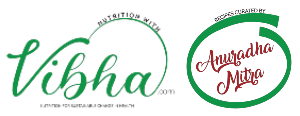Ensuring Abundant Milk Supply For Lactating Mothers

[um_loggedout show_lock="no"]
There are many advantages to breastfeeding or chestfeeding for both you and your child, but it's not always easy. Some parents are concerned that their children aren’t getting enough breast milk from them. It's not easy, after all, to track your milk supply and your infant’s consumption. The best all-natural and efficient strategies to boost breast milk production are compiled below.
Natural ways to increase Breast milk
Some of the best ways to naturally increase breast milk-
- Evaluating your baby’s latch
- Continuing to breastfeed
- Using a breast compression
- Stimulating your breasts
- Using a supplemental nursing system
- Making healthy lifestyle changes
- Breastfeeding longer
- Not skipping feedings or using formula
- Breastfeeding from both breasts
- Keeping baby awake
- Boosting skin-to-skin contact
- Using a breast pump
- Avoiding the use of a pacifier
- Eating well
- Drinking plenty of fluids
- Getting enough rest
You are probably producing enough milk if your child is eating, sleeping, growing, and requiring diaper changes on a regular basis. However, there are instances when your supply could really use an increase- particularly if you want to make sure supply maintains up with your developing baby’s needs or if you plan to pump extra milk for storage.
In situations like this, there are several ways to produce more breast milk.
To begin with, it is helpful to determine whether you need to increase your breast milk production. It's likely that your body will produce enough milk to meet the nutritional demands of your child. Here are a few indicators that are in fact, producing enough breast milk:
- Your baby is swallowing during feedings
- They seem fully tired, or content when they are done feeding
- They are making regular wet and dirty diapers
- Your baby is growing and gaining healthy weight.
Crying and fussiness after feeding aren’t normally the signs of hunger, therefore in these situations, don’t be concerned about the availability of milk. Rather, look for the root reason, which may be gas, teething, or other medical issues. Also, remember that your child’s pediatrician will measure their growth every visit. Do not be afraid to seek assistance and talk through your alternatives if you are worried about your poor supply of breast milk.


